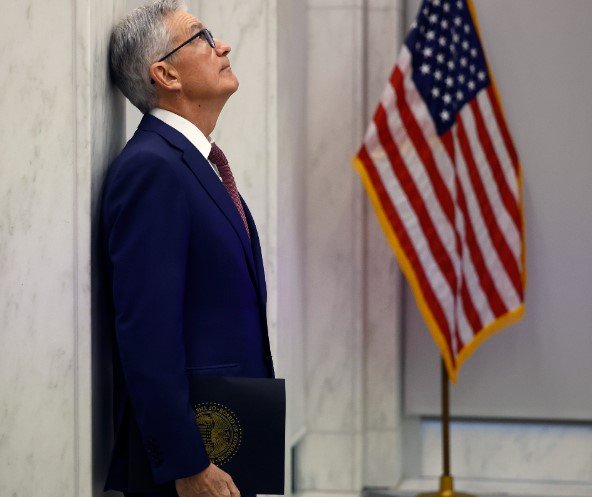In a surprising move, the US Federal Reserve has slashed its key lending rate by 50 basis points, just weeks before the upcoming presidential election. This decision marks the first rate cut since the COVID-19 pandemic and aims to lower borrowing costs across the board. The rate cut, which brings the central bank’s benchmark rate to between 4.75% and 5.00%, is expected to have significant implications for the economy and the political landscape as the nation heads to the polls.
Economic Implications of the Rate Cut
The Federal Reserve’s decision to cut rates by half a percentage point is a bold step aimed at stimulating economic growth. By lowering the cost of borrowing, the Fed hopes to encourage spending and investment, which could help sustain the economic recovery. This move comes as inflation shows signs of easing, and the labor market continues to cool, providing the Fed with the confidence to adjust its policy.
However, the aggressive rate cut also carries risks. While it may boost economic activity in the short term, there is a concern that it could reignite inflationary pressures. The Fed’s decision to implement such a significant cut reflects its assessment that the benefits of stimulating the economy outweigh the potential risks. Analysts will be closely watching the impact of this move on consumer spending, business investment, and overall economic growth in the coming months.

The timing of the rate cut, so close to the presidential election, adds another layer of complexity. The Fed’s actions are likely to be scrutinized by both political parties, with each side interpreting the decision through their own lens. As the election approaches, the economic implications of the rate cut will undoubtedly become a focal point in the political discourse.
Political Reactions and Implications
The rate cut has elicited strong reactions from both sides of the political spectrum. Democratic presidential candidate Kamala Harris has welcomed the move, highlighting its potential to ease the financial burden on American families. In a statement, Harris emphasized her commitment to continuing efforts to bring down prices and support economic stability. This aligns with her broader campaign message of economic inclusivity and support for working families.
On the other hand, former President Donald Trump, the Republican candidate, has criticized the Fed’s decision. Trump has suggested that the rate cut is either a response to a weakening economy or a politically motivated move. His comments reflect a broader skepticism among some Republicans about the Fed’s independence and its role in shaping economic policy. As the election draws nearer, the rate cut is likely to become a contentious issue, with both candidates using it to bolster their economic platforms.
The Fed’s decision also has implications for the broader political landscape. By taking such a decisive action, the Fed has inserted itself into the election narrative, whether intentionally or not. This move underscores the interconnectedness of economic policy and political strategy, highlighting the challenges faced by policymakers in navigating these complex dynamics.
Market Reactions and Future Outlook
The immediate market reaction to the Fed’s rate cut has been mixed. Major US stock indices showed varied responses, reflecting the uncertainty surrounding the long-term impact of the decision. While some sectors may benefit from lower borrowing costs, others remain cautious about the potential for renewed inflationary pressures. Investors will be closely monitoring economic indicators and corporate earnings reports to gauge the effectiveness of the rate cut.
Looking ahead, the Fed has indicated that additional rate cuts may be on the horizon. Policymakers have penciled in another half-point cut before the end of the year, with further reductions expected in 2025. This forward guidance suggests that the Fed is committed to a more accommodative monetary policy stance, aimed at supporting economic growth and achieving its long-term inflation targets.
The future trajectory of interest rates will depend on a range of factors, including economic data, inflation trends, and global economic conditions. The Fed’s ability to balance these considerations will be crucial in determining the success of its policy measures. As the economy continues to evolve, the Fed’s actions will remain a key focus for investors, policymakers, and the public alike.
